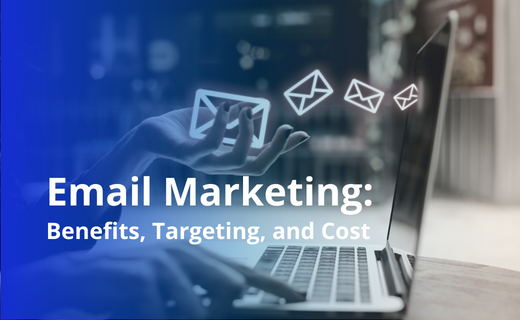
The Ultimate Guide to Performance Marketing
Performance marketing has revolutionized the way businesses promote their products and services online. In this ultimate guide, we will explore the ins and outs of performance marketing, from understanding its definition and importance to setting up a successful strategy and implementing effective techniques. We will also delve into measuring performance marketing success and optimizing your efforts for maximum results. So, let's get started!
Understanding Performance Marketing
Performance marketing is an online advertising strategy that focuses on driving specific actions or conversions, such as clicks, leads, or sales. Unlike traditional advertising methods, where businesses pay upfront for ad placements without any guarantee of results, performance marketing allows advertisers to only pay when desired actions are achieved. This pay-for-performance model makes performance marketing a cost-effective and results-driven approach.
When it comes to performance marketing, the importance lies in its ability to provide measurable results and maximize return on investment (ROI). By aligning digital advertising efforts with specific objectives and tracking performance metrics, businesses can ensure that their marketing budget is efficiently utilized.
One of the key reasons why performance marketing is important is its ability to provide actionable insights into what is working and what needs improvement. With detailed data and analytics, advertisers can gain a deep understanding of their target audience, campaign effectiveness, and potential areas for optimization, allowing them to make informed decisions and drive better results.
Definition and Importance of Performance Marketing
Performance marketing is often defined as "marketing that pays." It is all about achieving measurable results and maximizing return on investment (ROI). By aligning digital advertising efforts with specific objectives and tracking performance metrics, businesses can ensure that their marketing budget is efficiently utilized.
One of the key reasons why performance marketing is important is its ability to provide actionable insights into what is working and what needs improvement. With detailed data and analytics, advertisers can gain a deep understanding of their target audience, campaign effectiveness, and potential areas for optimization, allowing them to make informed decisions and drive better results.
Moreover, performance marketing offers a level of transparency that traditional advertising methods often lack. Advertisers can track and measure the performance of their campaigns in real-time, allowing them to make adjustments and optimize their strategies on the go. This flexibility and agility are crucial in today's fast-paced digital landscape.
Furthermore, performance marketing allows businesses to have more control over their advertising spend. Instead of paying for ad placements upfront, advertisers only pay when desired actions, such as clicks, leads, or sales, are achieved. This pay-for-performance model ensures that businesses are only investing in advertising efforts that deliver tangible results.
Key Components of Performance Marketing
To successfully implement performance marketing campaigns, it's important to understand the key components that make it work. These include:
- Clear goals: Before diving into performance marketing, it is essential to define your objectives. Whether you aim to increase brand awareness, generate leads, or drive sales, having clear goals will guide your strategy and ensure that you are focusing on the right metrics.
- Targeted audience: Knowing your target audience is crucial for effective performance marketing. By understanding their demographics, interests, and behaviors, you can tailor your messages and targeting strategies to attract the right customers.
- Performance trackers: Tracking tools and technologies are at the core of performance marketing. They provide real-time data on impressions, clicks, conversions, and other relevant metrics, enabling advertisers to measure and optimize their campaigns.
- Conversion optimization: Performance marketing is not just about driving traffic; it's about converting that traffic into valuable actions. Optimizing landing pages, call-to-action buttons, and user flows can significantly improve conversion rates and campaign performance.
- A/B testing: Another important component of performance marketing is A/B testing. By testing different variations of your ads, landing pages, and other elements, you can identify what resonates best with your target audience and refine your strategies accordingly.
- Continuous optimization: Performance marketing is an ongoing process. It requires constant monitoring, analysis, and optimization to ensure that your campaigns are delivering the desired results. By regularly reviewing performance metrics and making data-driven adjustments, you can continuously improve the effectiveness of your marketing efforts.
By understanding and implementing these key components, businesses can harness the power of performance marketing to drive targeted actions, achieve their marketing goals, and maximize their ROI.
Setting Up a Performance Marketing Strategy
Before diving into the implementation of performance marketing techniques, it's important to establish a well-defined strategy. This involves identifying your marketing goals and choosing the right performance marketing channels.
Developing a performance marketing strategy requires careful consideration and planning. It is not enough to simply implement various tactics without a clear direction. By setting clear objectives, you can ensure that your efforts are focused and aligned with your overall business goals.
Identifying Your Marketing Goals
Setting clear objectives is the first step in developing a performance marketing strategy. Whether you want to increase sales, generate leads, or boost website traffic, defining specific, measurable, achievable, relevant, and time-bound (SMART) goals will help align your efforts and track progress effectively.
For example, if your goal is to increase sales, you may set a specific target for the number of sales you want to achieve within a certain time frame. This will allow you to measure the success of your performance marketing efforts and make necessary adjustments along the way.
Furthermore, it is important to consider the target audience for your marketing campaign. Understanding your audience's needs, preferences, and behaviors will help you tailor your performance marketing strategy to effectively reach and engage them.
Choosing the Right Performance Marketing Channels
There are numerous performance marketing channels available, each with its strengths and target audience. It's crucial to select the channels that best align with your goals and target audience. Some popular performance marketing channels include paid search advertising, affiliate marketing, social media advertising, email marketing, and content marketing.
Paid search advertising, such as Google Ads, allows you to display targeted ads to users who are actively searching for products or services related to your business. This can be an effective way to drive relevant traffic to your website and increase conversions.
Affiliate marketing involves partnering with affiliates who promote your products or services in exchange for a commission. This can help expand your reach and generate sales through the networks and audiences of your affiliates.
Social media advertising allows you to reach a wide audience on platforms such as Facebook, Instagram, and Twitter. With advanced targeting options, you can ensure that your ads are shown to the right people, increasing the chances of engagement and conversion.
Email marketing remains a powerful tool for nurturing leads and driving conversions. By building a targeted email list and delivering personalized content, you can effectively engage with your audience and encourage them to take action.
Content marketing involves creating and distributing valuable, relevant, and consistent content to attract and retain a clearly defined audience. This can include blog posts, videos, infographics, and more. By providing valuable information and establishing your expertise, you can build trust and credibility with your audience, ultimately driving conversions.
When choosing the right performance marketing channels, it's important to consider your target audience's preferences and habits. For example, if your target audience is primarily active on social media, investing in social media advertising may yield better results compared to other channels.
In conclusion, setting up a performance marketing strategy involves identifying your marketing goals and selecting the right performance marketing channels. By defining clear objectives and understanding your target audience, you can develop a strategy that effectively drives results and helps you achieve your business goals.
Implementing Performance Marketing Techniques
Now that you have a clear strategy in place, it's time to implement performance marketing techniques to drive results. Let's explore some of the most effective techniques:
Search Engine Marketing (SEM)
SEM involves promoting businesses through paid advertisements that appear on search engine result pages (SERPs). By bidding on relevant keywords, businesses can ensure their ads are visible to users actively searching for products or services, increasing the chances of conversions.
Affiliate Marketing
Affiliate marketing is a performance-based marketing model where businesses pay affiliates a commission for driving desired actions. Affiliates promote products or services through their channels, such as websites, blogs, or social media, and earn a commission when their audience makes a purchase or performs the desired action.
Social Media Advertising
Social media platforms, such as Facebook, Instagram, Twitter, and LinkedIn, offer powerful advertising opportunities. With their extensive user bases and advanced targeting options, businesses can reach their ideal audience and drive conversions through various ad formats, including image ads, video ads, and carousel ads.
Measuring Performance Marketing Success
Measuring and analyzing performance marketing metrics is essential to track the success of your campaigns and identify areas for improvement. Let's explore some essential performance marketing metrics:
Essential Performance Marketing Metrics
- Click-through rate (CTR): Percentage of users who clicked on your ad after seeing it.
- Conversion rate: Percentage of users who performed the desired action, such as making a purchase or filling out a lead form.
- Return on ad spend (ROAS): Measure of revenue generated for every dollar spent on advertising.
- Cost per acquisition (CPA): Average cost to acquire a customer or lead.
- Customer lifetime value (CLTV): Predicted revenue generated by a customer throughout their lifetime.
Analyzing and Interpreting Data
Once you have collected data, it's important to analyze and interpret it to gain actionable insights. Data analysis can help you understand campaign performance, identify trends, and make data-driven decisions to optimize your performance marketing efforts. Visualization tools and dashboards can aid in comprehending data patterns and communicating insights effectively.
Optimizing Your Performance Marketing Efforts
Continuous optimization is key to maximizing the effectiveness of your performance marketing campaigns. Let's explore one of the most effective optimization techniques:
A/B Testing in Performance Marketing
A/B testing involves creating two or more variations of an ad or landing page and testing them against each other to determine the most effective version. By comparing performance metrics, such as conversion rates or click-through rates, you can identify which variations drive better results and refine your campaigns accordingly.
Scaling Successful Campaigns
Once you have identified successful campaigns, scaling them is the next step. Scaling can involve increasing your ad budget, expanding your target audience, or exploring new marketing channels. It's essential to closely monitor performance as you scale to ensure continued success.
In conclusion, performance marketing offers a powerful approach to drive specific actions and achieve measurable results. By understanding the key components, setting clear goals, implementing effective techniques, and continuously optimizing your campaigns, you can unlock the full potential of performance marketing and maximize your return on investment. So, get ready to boost your online marketing efforts and outperform your competition!
Looking to take your performance marketing strategy a notch higher? You're in the right place. At KPI Media, a distinguished performance marketing agency in Singapore, our purpose is to empower venture-backed startups in the APAC region to reach unprecedented growth levels. We achieve this through our ultra-specific media buying, coupled with sophisticated automation and analytics.
What sets us apart is our KPI Guarantee. If we don't meet the targets of your campaign, we'll slash your retainer fees by 50%. Plus, we offer month-to-month engagements for added flexibility, and the privilege to tap into our award-winning expertise. Moreover, when you partner with KPI Media, you gain a dedicated team, tailored real-time reporting, and the opportunity to venture into infinite channels at low minimum spends.
We pride ourselves on being industry agnostic, with a solid focus on APAC. This comprehensive approach ensures we provide you with the localized insights necessary for your business' growth. Don’t let the opportunity to get a free, no-commitment growth consultation (valued at $250) with our Chief Growth Officer pass you by.
Schedule your session today, and let us design a paid media strategy that truly resonates with your goals.






























![Top 5 Performance Marketing Agencies in Singapore [2024]](https://assets-global.website-files.com/6337c10f1badd94e65c880fd/656ae2e6f6e786000e3a5c3b_performanceblog.png)
![The Complete Guide to LinkedIn Ads Targeting For B2B Startups [2023]](https://assets-global.website-files.com/6337c10f1badd94e65c880fd/64fecea66abe46916dbea16d_blog%20covers%20(7).png)
.png)
.png)
.png)
.png)
.png)
.png)










.png)

.png)



.png)



